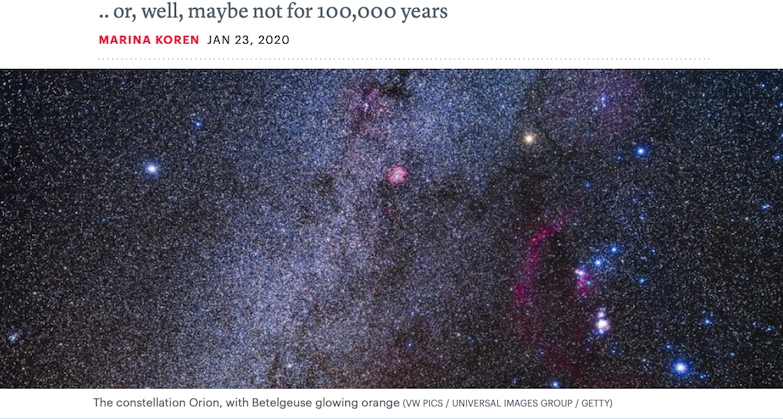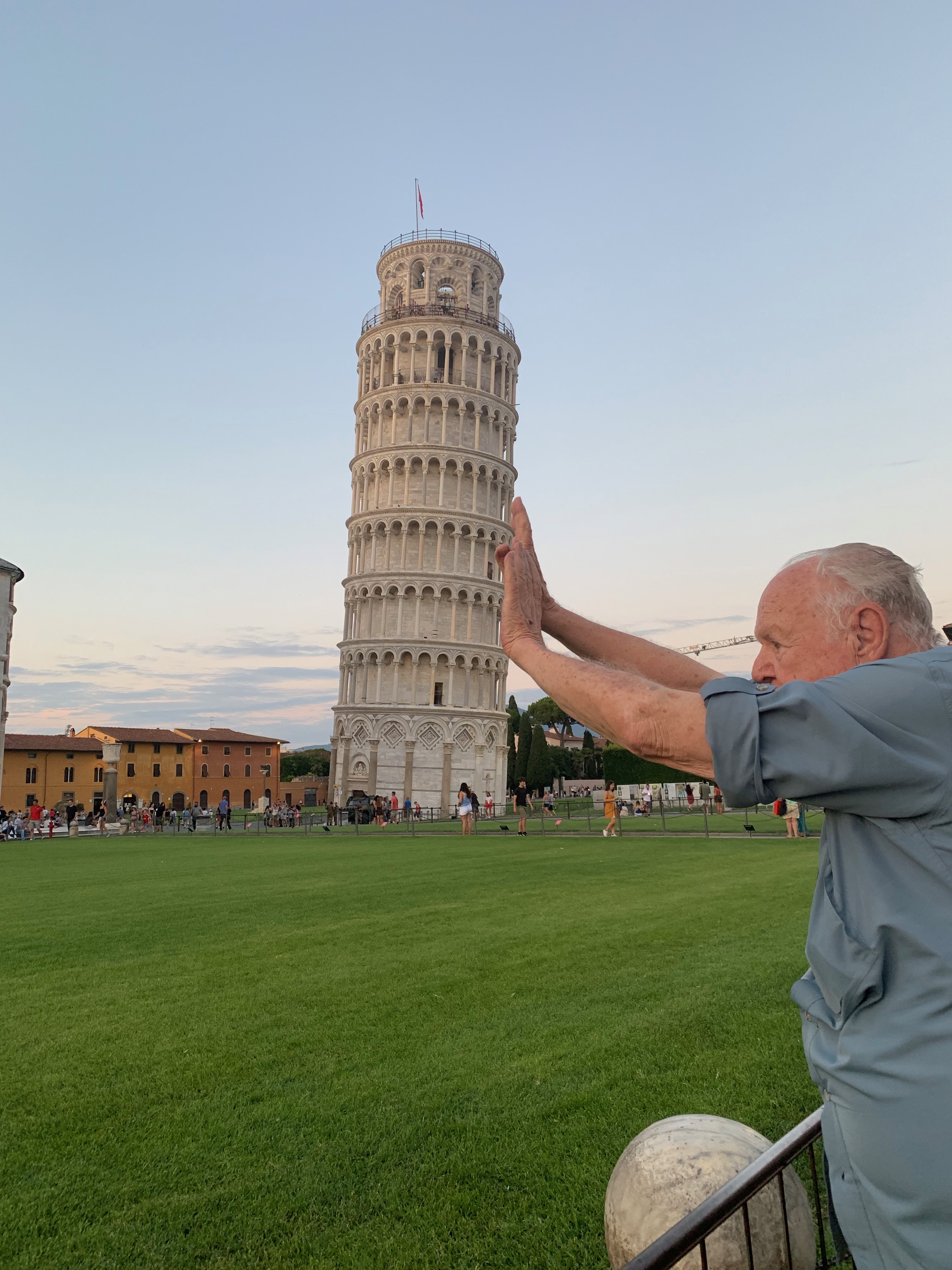
Sometime this week, you might walk outside in broad daylight, look up at the sky, and see a luminous orb as bright as a full moon. Only it wouldn’t be the moon. It would be something far more explosive: the dazzling aftermath of a cataclysm hundreds of light-years away.
You’d be seeing the light from a supernova—the final, powerful flash of a dying star.
Or … you might see the regular old sky. Supernovas are nearly impossible to predict. But astronomers have recently started discussing the rare possibility with a bit more enthusiasm than usual, thanks to some odd behavior elsewhere in the Milky Way. If the supernova did show up tomorrow, it would be the celestial event of the year, perhaps even the century, leaving a cosmic imprint in the sky for all to see.
In the night sky, the constellation Orion is most well-known for his belt, a row of three luminous stars. For the last few months, though, astronomers around the world have been particularly interested in his right shoulder, the home of a star called Betelgeuse, one of the brightest stars in the sky. Betelgeuse—which, yes, is pronounced like Beetlejuice—has been dimming more than it ever had before. Astronomers have long known that Betelgeuse is aging and, like many old stars, is bound to explode sooner or later. Could this mystery dimming mean that a supernova might be imminent?
The view would be mind-boggling, day or night. The Orion constellation can be seen from nearly everywhere on Earth, which means nearly everyone could see the exploding star. It would easily cut through the artificial-light pollution that prevents 80 percent of the world—and a staggering 99 percent of the United States and Europe—from experiencing a clear view of the night sky.
“At the predicted brightness of a Betelgeuse supernova, you could be standing in the center of the biggest city in the world, and you would certainly see it,” says John Barentine, an astronomer and the director of public policy at the International Dark-Sky Association, a nonprofit that works to mitigate light pollution. “You couldn’t miss it.”
Even more spectacular, the display would stick around. The gleaming orb would remain visible for more than a year, perhaps even longer. How strange it would be to witness day in and day out, to understand, for the most part, that the blaze is simply a natural wonder of the universe, but still feel, on a deeper, more primitive level, that the sky looks very wrong.
The cataclysm wouldn’t harm Earth. Betelgeuse isn’t the sort of star whose demise would produce radiation that could roil the planet’s atmosphere. At about 650 light-years from here, Betelgeuse is nearby on a cosmic scale, but thankfully not close enough to cause any damage.
[Read: What if history’s brightest supernova exploded in Earth’s backyard?]
So how might people react? Judging by what happened in New York about a year ago, there would be confusion, even panic. One night in December, an aquamarine glow appeared over Queens, prompting 3,200 calls to 911 in half an hour. Residents shared videos and photos of the ghostly spectacle on social media, along with guesses for the source. Was this a bomb? Was it the climax of a ground-shaking battle between superheroes?
The real explanation was far less dramatic. The operator of an electrical-power plant quickly chimed in on social media to describe the incident. Some equipment at the facility had short-circuited, and the malfunction sent a powerful current shooting into the air. The electricity jostled atoms of gas in the atmosphere, prompting them to emit blue light.
A similar scenario would likely play out online in the case of a surprise supernova, with NASA and other science institutions leading the awareness campaign. “The way the world is on edge about a number of things right now, whether it’s climate change or international relations, it would be interesting how people would interpret it, if some people would think that it was some kind of sign,” Barentine says.
The most recent nearby supernova appeared long before people could panic about it on Twitter, in 1987, but it could be seen only in very dark parts of the Southern Hemisphere, far from artificial lights. Other examples are found even deeper in history, in 1604 and 1054. Betelgeuse would provide a far better show; the other stars were thousands of light-years from Earth, rather than hundreds.
The question is, of course, when. Scientists can’t predict Betelgeuse’s end because they have never witnessed the lead-up to a supernova, only the glowing aftermath, with the help of powerful telescopes. This is why astronomers have been saying Betelgeuse could go supernova “any day now” for years. The star might explode tomorrow or in 100,000 years, says Stella Kafka, an astronomer at the American Association of Variable Star Observers who studies Betelgeuse and similar twinkling stars. It’s even possible the supernova has already happened, and the light from the explosion is still making its way to Earth.
[Read: Astronomers spot supernova thanks to a cosmic magnifying glass]
On top of that, astronomers don’t have any proof that the mysterious dimming is a precursor to a supernova. Although Betelgeuse has never darkened this much, it’s known for periodic fluctuations in brightness, and there might be a nonexplosive explanation for the latest extreme dip, like nearby clouds of dust crowding out the light.
“It would be interesting if the dimming is connected, but we don’t really know that,” Kafka says.
While a Betelgeuse supernova would eventually fade, its mark on the planet would remain, and not just within the ether of the internet. When stars explode, they release a cascade of newly forged elements into space. These elements glide across the universe inside particles of dust, settling on whatever they encounter. Astronomers have detected this stardust all over Earth, inside mud on the ocean floor and snow in Antarctica. It is these explosions and the cosmic droplets they unleashed that helped give rise, over eons, to other stars, planets, and, in our case, life. Someday, a bunch of stardust might look up at the sky and see it happening all over again.
